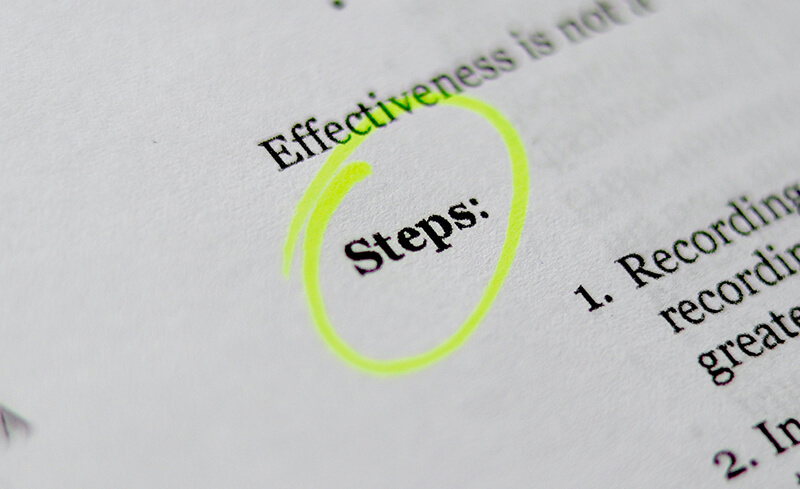
What Is A Narrative Essay And The Six Steps To Writing One
 What is a narrative essay and how do you write one? This type of essay’s main purpose is to inform and tell a story. The narrative form of writing allows a writer to take on the role of a storyteller where, unlike most essays, the use of the word ‘I’ is welcomed. By the end of this blog, you’ll know all the parts of a narrative essay, learn the narrative essay format, how to start a narrative essay, and even get some examples of narrative essay topics.
What is a narrative essay and how do you write one? This type of essay’s main purpose is to inform and tell a story. The narrative form of writing allows a writer to take on the role of a storyteller where, unlike most essays, the use of the word ‘I’ is welcomed. By the end of this blog, you’ll know all the parts of a narrative essay, learn the narrative essay format, how to start a narrative essay, and even get some examples of narrative essay topics.

Narrative Essay Definition
Writing a narrative essay tests a writer’s ability to tell a story in a compelling and interesting way. Purdue Online Writing Lab says narrative essays are often experiential and anecdotal. This type of essay is the most personal which allows the usage of the word “I”.
From the root word “narrate”, narrative essays allow writers to tell stories that are either based on experience or purely fictional. Argumentative, persuasive, and even informative types of essays usually need writers to present evidence but that isn’t necessarily required for narrative writing.
Narrative writing is often seen in novels, screenplays, short stories, personal essays, fairy tales, and autobiographies.

Narrative Essay Guidelines
As simple as it initially sounds, not everyone can answer the question “what is a narrative essay?”. In order to write one correctly, here are some guidelines to consider before starting the writing process.
1. Build Up Characters With Your Narrative
Taking on the role of narrator and writer, you are in charge of shaping all the contents of your story from the plot, setting, and especially the characters.
There are plenty of ways to develop your character’s personalities and individual stories such as:
a) Establish the importance of a character’s existence by providing a backstory and letting readers know the character’s goals and motivations.
b) Create dynamic characters by giving them not only strengths but weaknesses too.
c) Besides external conflict within the narrative story, create internal conflict within the characters as well.
d) Decide early on which characters are dynamic and which ones are static. In other words, choose your main and secondary characters.
e) Allow your characters to be distinguishable from each other.
f) For even more dynamism, give certain characters distinct mannerisms or quirks.
g) Do research to make your fictional characters more realistic.
2. Take Notes On How Others Tell Stories
As part of your preparation, take note the next time someone tells you a story. Focus on the structure of their storytelling besides the story itself. Take note of when someone jumps back and forth in the timeline and which parts are more animated. Take note of instances where the storyteller builds up suspense and keep these storytelling techniques in mind when you write your own narrative.
3. Alternate Narrative Writing Styles
There are four types of narrative writing which we will further discuss below. Don’t be afraid to incorporate characteristics of a descriptive narrative or a viewpoint narrative when you’ve chosen a linear type of narrative writing. Mix and matching narrative styles are welcomed!
4. Don’t Be Afraid To Experiment
Other types of essays require a more logical and structured approach. The best thing about learning what is a narrative essay is that you can be creative. When getting started, freewriting is one of the best ways to knock this assignment out of the park. As the narrator and writer, you have all the power to shape your own story which makes narrative writing one of the more fun types of writing assignments.

Features of Narrative Essay
In order to answer what is a narrative essay, you’ve got to learn the basic elements that make an essay a narrative one. Here are its five features:
1. Descriptive Language
Narrators succeed in painting a picture through words using descriptive language. Using descriptive language is a technique that gives depth to a story. Use descriptive verbs, adjectives, and adverbs to make your storyline clearer, compelling, and colorful. You can also use types of figurative language to create vivid imagery by using personifications, onomatopoeias, hyperboles, alliterations, similes, idioms, and metaphors.
2. Characters
In learning what is a narrative essay, it’s important to know that your story can either have just one character or a whole cast of them. In most stories, the narrator is the sole character. Alternatively, the narrator can coexist with other characters. You can also opt to have the narrator interact with or not with the characters.
Complex narrative writing can consist of different characters but it’s important to distinguish between your antagonist(s) and protagonist(s). The main character, usually the character the readers root for to win is the protagonist, while the character who creates conflict is the antagonist. Depending on the complexity of your story or the creative route you take, your main character could also be the antagonist.
3. Plot
The plot is the story and what you’ll aim to narrate through writing. It is the series of events that transpire within a specific setting that happens to your characters. Depending on how complex you want your narrative essay to be, a plot can be simple with just one or two main events. On the other hand, it can also be multi-layered with more than one inciting incident, conflict, and resolution.
1. Narrative Structure
a. Beginning
The narrative essay introduction is where you begin to introduce to your readers the first 3 features of your narrative essay. To start the essay, you describe your setting, slowly introduce the characters, start the plot, and prepare your readers for the climax. Just like any essay, your introduction should contain a thesis.
Here’s how to start an essay in 10 different ways.
b. Middle
The middle part of your narrative essay is where the action begins. Your protagonist starts to face initial conflicts from either external factors or the antagonist. This is where your inciting incident happens where usually the protagonist fails at achieving their goal.
c. End
The ending begins after the climax and the falling action starts. This is where readers start to find out vague or unknown parts of the plot that stir up shocking emotions. The end has to satisfy the readers, tie up loose ends, and answer any remaining questions the readers might have. You can also explore what life is like for the protagonist after the conflict.
Concluding an essay can be challenging so here is a guide on how to start a conclusion with a lasting impact.

Types of Narrative Writing
Linear
“Linear” here refers to the proper sequence of events that transpire in the story being narrated. The events in your narrative essay’s plot follow the exact order in which they happened. Often known to be typical of realist fiction, examples of a linear narrative essay unfold similarly to how a character lives their life. Day by day, month by month, or year by year.
Because of the linear telling of the sequence of events, this type of narrative essay shows causation clearly. The chronological order of events easily shows a pattern through cause and effect which is the purpose of this type of essay.
Non-Linear
As opposed to a linear type of narrative writing, the non-linear type of essay does not present the story or events in chronological order. For example, the author might jump through the timeline going from present to past and back during the narration.
A non-linear narrative essay has three distinct purposes. First, to present the reason for a narrator’s current emotional state or consciousness by recalling an event of the past through flashbacks. Readers are able to piece together the story through fragmented recalls of the past to explain current events. Second, to show parallelisms between present and past characters. Present characters could echo events from the past which will require the narrator to jump from timelines to highlight this to the readers. Third, to build suspense. Often seen in thriller or murder-mystery-type stories, the narrator can jump from when a victim is murdered and then narrate the moments that lead up to it.
Viewpoint
An easy-to-remember characteristic of a viewpoint narrative form of writing is it allows us to peer into the third-person perspective. The purpose of viewpoint narrative writing is to present events and scenes through the perspective of a narrator. It lets the readers understand the main character’s feelings, desires, motivations, and even their sadness.
When reading a viewpoint type of narrative essay, it’s important to consider that the perspective could be skewed. Because readers are following the perspective of another, it could be unreliable and biased. An example of a narrative essay that uses viewpoint narrative is Vladimir Nabokov’s Lolita. The narrator in the story has his own agenda which glosses over the realities of the plot.
Descriptive
A descriptive narrative has two distinct purposes. The first is to create a clear setting within a specific time and place and the second is to create a specific mood or tone. Samples of moods or tones that your descriptive narrative story could follow are peaceful, chaotic, cheerful, etc.
Historical Narrative
The historical narrative type of writing is usually seen in autobiographies, biographies, and even fictional historical subgenres like historical romance and fictional stories based on historical events.

What To Consider For The Best Narrative Essay
1. Tell the full story
Your readers are most likely to finish your narrative essay from start to finish when it is not only engaging, but is clear, meaningful, and complete. A full story includes an introduction, a plot, a complete set of characters, a setting, a climax, and a conclusion. Without all these elements, you risk losing the attention of your readers. Not only that, but if this is an assignment, your narrative essay might be considered incomplete.
2. Know when not to tell a story
Although you’re required to tell the full story in writing a narrative essay, that is not what a narrative essay is limited to. A book report for example can fall under the category of what is a narrative essay. The aim of a book report is to inform the reader and not necessarily tell its story.
Check out our blog on how to write a book report for any college or university class or try out our book report writing services!
3. Find your purpose
We recommend freewriting as preparation for your narrative essay, but in completing the assignment, you can’t just be writing aimlessly! A good narrative has a point, a lesson, or some important takeaway for the readers. Finding what your essay’s purpose is will help you write the best narrative essay.
Narrative essays aren’t the only type of essay that requires a purpose. In other words, your purpose is similar to your thesis statement and it acts as the core of your essay. When in doubt as you write a narrative essay, ask yourself what you aim to achieve by writing it and what you aim to share with your readers.
4. Have a clear point of view
There are many perspectives to choose from when writing a narrative essay that isn’t limited to the main character or the author. Whether you’re choosing a first, second, or third-person perspective and choose to be more creative, make sure your chosen perspective is clear to the readers and easy to follow. A clear point of view is easier to read, understand and ultimately enjoy.
5. Use language wisely
A good narrative essay is heavily dependent on your choice of words. Similar to a descriptive type of essay. According to Purdue Online Writing Lab, the effectiveness of a narrative essay is based on your ability to choose words in a careful, particular, and artful way. Certain words and phrases can bring out specific emotions, reactions, and even senses from your readers.
6. Using ‘I’
Most academic essays don’t allow the use of the word ‘I’. In fact, some research essays require writers to refer to themselves in the third person perspective. However, while the word ‘I’ is allowed, it also shouldn’t be abused or overused.
7. Organization is key
You can easily set the tone of your narrative essay with a clear introduction. By following the proper structure of a narrative essay, you can ensure the organization and quality of your essay. It is imperative to let your readers know early on what your objectives are and what your purpose is. Narrative essays are what they are because they inform the reader instead of leaving questions answered and keeping them guessing.
As both writer and narrator, you are in charge of which direction the essay goes. Regardless of the route you choose, make sure your readers can follow the lead.

Narrative Essay Sample Outline
To give you a little more insight into what is a narrative essay and what it might look like, here is a sample outline of a narrative essay.
Topic / Writing prompt: An inspirational figure in your student life
Thesis statement: How my English teacher shaped who I am today
First Supporting claim: My English teacher ignited my love for reading
Second Supporting claim: My passion for reading strengthened my writing and speaking skills which my English teacher further trained me in.
Third Supporting claim: My English teacher encouraged me to pursue a broadcast journalism career
Conclusion: Because of my English teacher’s guidance, I was able to become a successful broadcast journalist.

What Is A Narrative Essay and How To Write A Narrative Essay step by step
When asked “what is a narrative essay?”, Nova Southeastern University states that its purpose is to inform or tell a story. To do so, the writer takes the role of storyteller and narrator and describes people, scenes, and events. We know that the sequence of telling the plot can either take a chronological or non-chronological order, can be somewhat informal, and can include some dialogue.
We’ve discussed guidelines, given examples, learned the types of narrative essays, and learned the best tips to write them. Now here are all the steps you need to follow to know what is a narrative essay.
1. Brainstorm and organize your ideas
For any essay to turn out right, preparation is key. Whilst research is usually the first logical step, we can take the preparation a step higher by using these brainstorming tips:
Top 5 Brainstorming tips
● Free writing – free writing is basically jotting down any and all ideas that come to you without editing. This technique relies on preexisting knowledge you have that might not come as quickly if you were too self-aware and conscious of what you are writing. Through free writing, you are able to decipher your thoughts on the subject to be edited later.
● Creating a subject tree – To create a subject tree, write one word relating to your topic and draw arrows that point to other words that relate to it. From just one word, you will be able to form a tree that goes downwards as you continue the trend for each word or phrase you come up with. For example, the root word is “sadness”. From sadness, you can pick out two related words like “trauma” and “memories”.
● Listing ideas – similar to free writing, by listing ideas you can come up with keywords that will come in handy once you start writing. Just like the subject tree, pick one word related to your topic and start listing down synonyms or words that relate to your chosen topic word. For example, from the word “dessert” you can list down: sweet, fluffy, crunchy, sour, sugary, etc.
● Clustering – this technique is similar to creating a subject tree and listing ideas but it forms a different pattern. From your chosen topic word, encircle it and have arrows pointing in all different directions toward other words that are associated with that word. The subject tree and listing techniques all point down while clustering points all around.
● Outlining – The most structured of all these techniques, your outline basically shows the structure of your essay. By highlighting topic sentences from your introduction, body, and conclusion.
2. Research
Even if the story or information you choose to center your narrative essay on is based on personal experience, in order to fully translate that into writing, research is still necessary. You might find that there are gaps during your brainstorming stage that will then require you to do further research. Especially for certain phenomena that require a more logical explanation for your readers to fully understand. Remember that in order to inform anyone correctly, you need to be informed yourself which you can do through the research process.
3. Developing a thesis statement
Writing a thesis statement is a prerequisite for almost any type of essay. It’s important to structure your essay because it acts as the core and foundation from which you build on. A thesis statement is a general statement that is not necessarily observable and is debatable. It can be an assertion or claim that you will aim to prove with your supporting evidence, arguments, or details.
Writing is not always a linear process. So during the process, you may find that your initial thesis statement can be modified for the better or changed completely.
4. Write your introduction
Your introduction should answer the question of what you will be talking about during your essay, why it is important to discuss, and what your thesis statement is. There are plenty of ways to start an essay but as long as it answers those first three questions, then you’re set!
5. Essay Body
The body of your narrative essay is where you get to detail every supporting fact that leads to your thesis statement. The body of your essay can have at least three topic sentences that form your paragraphs. The topic sentence is usually at the beginning of each paragraph. Assuming you’ve done the brainstorming step, you will easily find the words from techniques like listing and clustering. You’ll also be able to work easily as you’ve already created your outline as well as fine-tune your free-written ideas.
6. Writing a conclusion
Writing a conclusion is where you give closure to your readers. This part is where you simply reiterate and summarize your whole essay. You can choose to tell your readers why it was important to talk about the topic, why it is relevant, and re-discuss the highlights.

Are you having a hard time learning how to write in narrative form?
There’s no need to ask questions like “how do you write a narrative essay?” with Homework Help Canada! If this blog was informational but time is your issue, we’ve got a narrative essay for sale! Not only that, each and every one of our essays, no matter the type, are custom-written specifically for you and your needs!
Homework Help Canada has been catering to student needs such as custom-written essays, custom PowerPoint presentations, speech writing services, and more for over a decade! With a talented team of writers capable of a variety of subjects, essay writing problems are a thing of the past! You might be considering getting another student or even AI to write your essays for you but you risk running into plagiarism problems which doesn’t happen when you get a professional writer from us! Get a free quote now and realize why Homework Help Canada is the best in the business.
Share:

